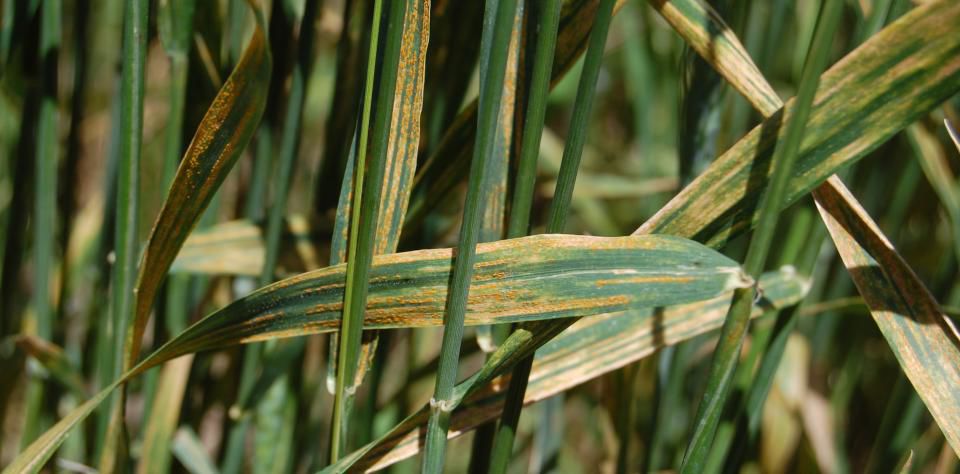Stripe rust, a serious disease of wheat worldwide caused by the fungal pathogen Puccinia striiformis f. sp. Tritici, historically has occurred wherever wheat is grown under cool, moist conditions during the season. Therefore it was considered a low-temperature disease that was problematic only during cool weather.
But this paradigm has changed. Over the last decade, the incidence and severity of stripe rust has increased dramatically. Serious damage has been documented in Nebraska under very warm conditions that were previously thought to be impossible.
Since 2000, the same observations have been documented nationwide on all forms of wheat, causing significant losses in new locations where it rarely ever was present—including more than 20 states from coast to coast and throughout the entire Great Plains, from Texas to North Dakota.
It is now thought that the widespread incidence and severe yield losses can be explained by the formation of new pathogen races. These races are not only more destructive and aggressive at higher temperatures than before, but they have seemingly displaced the old isolates across the expanded geographic ranges, suggesting that the new isolates were more fit than older ones. In doing so, they have additionally overcome the most effective genetic resistance used in the United States wheat crop, converting previously resistant cultivars to susceptible ones.
Management
Properly managing this disease will require several new concepts. First we need to realize that this pathogen is now capable of causing disease under conditions not previously considered. Unfortunately, there is no one magic silver bullet available. To successfully control stripe rust, it will likely take an integrated approach, consisting of multiple control measures, including both fungicide applications and use of resistant cultivars.
We have a number of current fungicides that are still effective for disease management. However, we are uncertain as to the optimal time for making fungicide applications. Due to the severe stripe rust epidemics in Nebraska wheat crops over the last decade, we began studies in 2016-17 attempting to help producers better manage this disease.
We need to realize that stripe rust may potentially now be an endemic problem that will require some attention each year. Thus it would be extremely useful to establish a tool that predicts when disease may become problematic. If successfully developed, it will not be a true disease forecasting model, but it should still assist growers with the process of estimating disease potential in their own fields based on a series of factors consistently required for the disease to occur.
These factors, among several others, include: level of genetic resistance in cultivars, crop stage at time of infection, 10- to 14-day weather forecast, time of the season infection occurs, incidence of disease in fields and yield expectations/inputs in crop.
We plan to conduct these studies and develop this disease prediction model during 2018 at several sites throughout the Panhandle with Dipak Santra, UNL alternative crops breeding specialist, and with additional sites in North Dakota in collaboration with Andrew Friskop, North Dakota State University extension plant pathologist.




